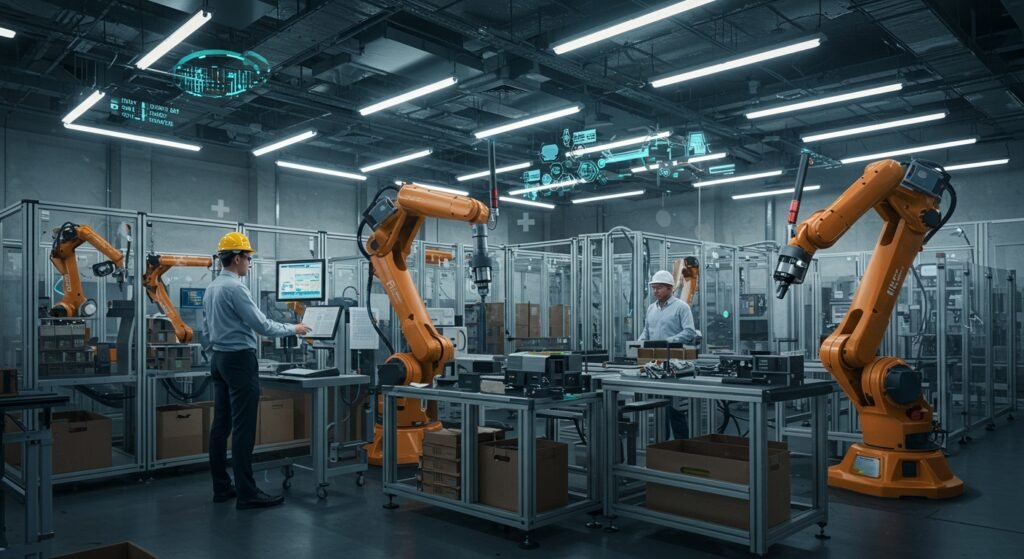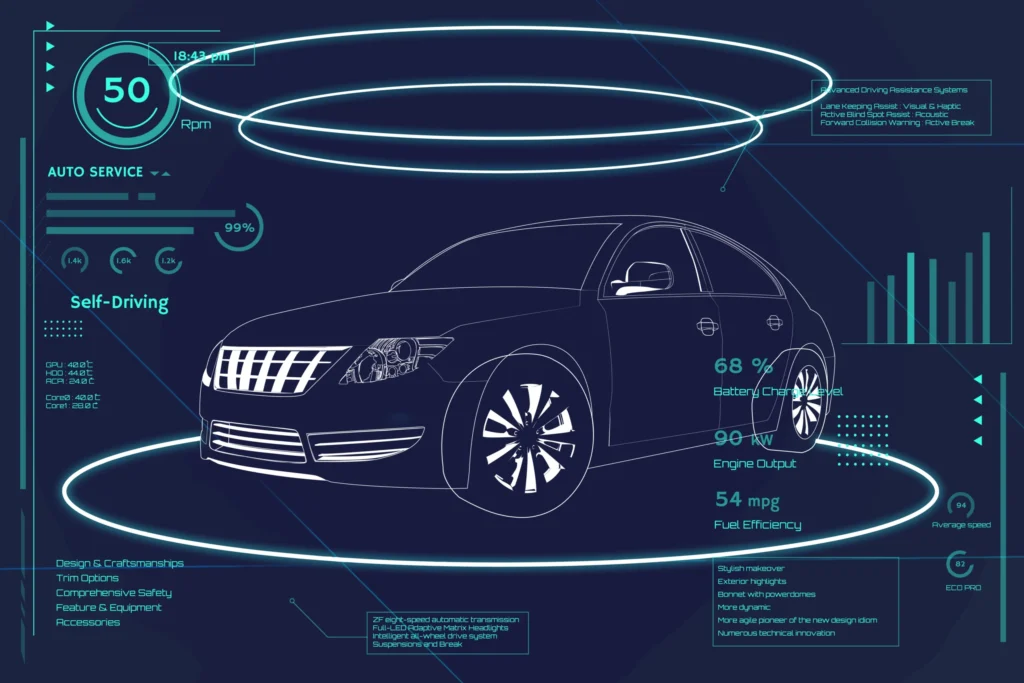The world stands on the cusp of a new industrial era, one that transcends mere technological advancement to embrace a profoundly human-centric approach. The Rise of Industry 5.0 marks a significant pivot, moving beyond the automation and data exchange of Industry 4.0 to integrate human creativity, collaboration, and sustainability directly into the core of industrial production. This evolution is not just about smarter machines; it’s about smarter collaboration between humans and machines, aiming to build a more resilient, human-centric, and environmentally conscious future.
Table of Contents
- What is Industry 5.0?
- The Core Pillars of Industry 5.0
- Industry 4.0 vs. The Rise of Industry 5.0: A Key Distinction
- Key Technological Enablers
- Benefits and Challenges
- How Industry 5.0 is Shaping the Future of Work
- Conclusion
What is Industry 5.0?
While Industry 4.0 focused on connecting machines, data, and processes to create “smart factories,” Industry 5.0 places the human element back at the center. It envisions a manufacturing environment where humans and robots work synergistically, leveraging the strengths of both. This paradigm shift emphasizes human well-being, worker empowerment, and the development of customized products and services, all while pursuing sustainable and ethical production practices. It’s about combining precision, speed, and automation with human creativity, critical thinking, and problem-solving abilities.
The Core Pillars of Industry 5.0
Industry 5.0 is built upon three fundamental pillars:
Human-Centricity
This pillar ensures that technology serves humanity, enhancing worker safety, comfort, and job satisfaction. It promotes collaboration between humans and cobots (collaborative robots), allowing humans to focus on tasks requiring creativity, judgment, and complex problem-solving, while robots handle repetitive or dangerous work.
Sustainability
Industry 5.0 strongly advocates for circular economy principles, aiming to minimize waste, reduce energy consumption, and optimize resource usage. This includes designing products for longevity, recyclability, and reusability, contributing to a more environmentally responsible industrial sector. For more insights on this, consider exploring sustainable manufacturing trends.
Resilience
The goal is to create industrial systems that are robust and adaptable, capable of withstanding disruptions such as supply chain shocks, natural disasters, or pandemics. This involves developing flexible production lines, decentralized decision-making, and robust cybersecurity measures.
Industry 4.0 vs. The Rise of Industry 5.0: A Key Distinction
Understanding the difference between Industry 4.0 and Industry 5.0 is crucial. While Industry 4.0 laid the groundwork with digitalization and automation, Industry 5.0 adds a layer of human-robot collaboration and a strong ethical, social, and environmental dimension.
| Feature | Industry 4.0 | Industry 5.0 |
|---|---|---|
| Primary Focus | Technological efficiency, automation, data exchange | Human-centricity, sustainability, resilience |
| Role of Humans | Supervisors of automated systems | Collaborators with smart systems (cobots) |
| Key Driver | Productivity, cost reduction | Value creation, societal impact, well-being |
| Goal | Smart factories | Smart, sustainable, human-centric factories |
Key Technological Enablers
Several technologies underpin Industry 5.0:
- Collaborative Robots (Cobots): Designed to work safely alongside humans, enhancing productivity and flexibility.
- Artificial Intelligence (AI) and Machine Learning (ML): Used for predictive maintenance, quality control, personalized production, and optimizing human-robot interactions.
- Internet of Things (IoT) and Industrial IoT (IIoT): Enable seamless data flow between machines, products, and people.
- Big Data Analytics: Provides insights for decision-making, process optimization, and personalized product development.
- Digital Twins: Virtual replicas of physical systems, allowing for real-time monitoring and simulation to improve efficiency and reduce downtime.
- Advanced Sensor Technologies: Crucial for real-time data collection and environmental monitoring.
Benefits and Challenges
The advent of Industry 5.0 promises numerous benefits:
- Increased Productivity & Quality: Combining human intelligence with machine precision.
- Enhanced Worker Safety & Satisfaction: Better working conditions and meaningful jobs.
- Greater Customization: Ability to produce highly personalized products at scale.
- Improved Sustainability: Reduced waste, lower energy consumption, and circular practices.
- Increased Resilience: More adaptable and robust supply chains.
However, challenges exist:
- Upskilling Workforce: The need for new skills in human-robot collaboration and data analytics.
- Ethical Considerations: Ensuring responsible AI and data usage.
- High Initial Investment: Costs associated with upgrading infrastructure and technology.
- Cybersecurity Risks: Protecting interconnected systems from threats.
How Industry 5.0 is Shaping the Future of Work
The transformation driven by Industry 5.0 will fundamentally alter the nature of work. Repetitive tasks will increasingly be handled by automation, freeing up human workers to engage in more creative, strategic, and problem-solving roles. This shift necessitates significant investment in education and training to equip the workforce with the skills needed for a collaborative future. The focus will move towards critical thinking, emotional intelligence, and interdisciplinary collaboration.
For further reading on the societal implications, you might find this article on the European Commission’s vision for Industry 5.0 insightful.
Conclusion
The Rise of Industry 5.0 represents a profound evolution, not just in technology, but in philosophy. It signals a move towards an industrial landscape where technological prowess serves human well-being and planetary health. By prioritizing human-centricity, sustainability, and resilience, Industry 5.0 promises to create a future that is not only efficient and productive but also equitable, ethical, and truly sustainable. Embracing this new era will require strategic planning, investment in human capital, and a commitment to collaborative innovation across all sectors.


